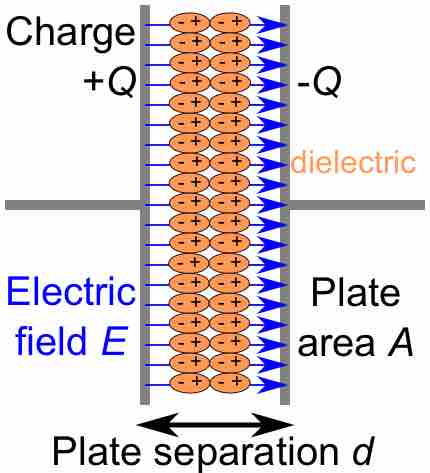In order for a capacitor to hold charge, there must be an interruption of a circuit between its two sides. This interruption can come in the form of a vacuum (the absence of any matter) or a dielectric (an insulator).
When a dielectric is used, the material between the parallel plates of the capacitor will polarize. The part near the positive end of the capacitor will have an excess of negative charge, and the part near the negative end of the capacitor will have an excess of positive charge . This redistribution of charge in the dielectric will thus create an electric field opposing the field created by the capacitor.

Diagram of a Parallel-Plate Capacitor
Charges in the dielectric material line up to oppose the charges of each plate of the capacitor. An electric field is created between the plates of the capacitor as charge builds on each plate.
Therefore, the net field created by the capacitor will be partially decreased, as will the potential difference across it, by the dielectric. On the other hand, the dielectric prevents the plates of the capacitor from coming into direct contact (which would render the capacitor useless). If it has a high permittivity, it also increases the capacitance for any given voltage. The capacitance for a parallel-plate capacitor is given by:
where ε is the permittivity, A is the area of the capacitor plates (assuming both are the same size and shape), and d is the thickness of the dielectric.
Any insulator can be used as a dielectric, but the materials most commonly used are selected for their ability to resist ionization. The more resistant a material is to ionization, the more tolerance it has for operating at higher voltages. Eventually every material has a "dielectric breakdown point," at which the potential difference becomes too high for it to insulate, and it ionizes and permits the passage of current.